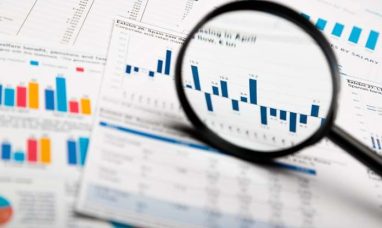The market always has an answer to the question of where Europe will get natural gas to stay warm this winter. Businesses in the English and Norwegian parts of the North Sea have sped up their work (and some results have already come in). But Mozambique, where Exxon Mobil (NYSE:XOM) is part of a group that just loaded the first LNG tanker to rebalance natural gas supply significantly, has one of the most important answers. Africa Oil (OTCPK:AOIFF) and Africa Energy are two other companies I follow that have told me about discoveries (OTCPK:HPMCF). But these companies backed by the Lundin Group will have to wait a few years before shipments start. On the other hand, Mozambique has made a significant discovery that is getting ready to meet a big demand in Europe.
Exxon Mobil is a part of the discovery off the coast. But now that significant natural gas finds have been made public; this African country may have many more chances in the future. Mozambique has gone from almost not producing anything to being a big exporter. Exxon Mobil’s project alone cost $8 billion, and other projects are in the works to increase the country’s oil production in the future.
Exxon Mobil says that it is just far enough ahead of a few big projects that cash flow from this project and a few others will start. This is similar to the coverage in Guyana, where money is starting to come in from another big project.
Exxon Mobil also said that it had found a large amount of oil in Angola for the first time in about 20 years. These African countries are in a great position to help solve the shortage problems in Europe. It’s likely to be a little “messy” now, since market solutions aren’t always “synchronised” perfectly. But there is a solution for Europe that does not involve Russia, which is closer than many believe.
Some Other Steps
In Papua New Guinea, Exxon Mobil is working on a considerable project.
The company built the plant here and then bought InterOil to always have enough oil. This is most likely one of the world’s major fields, supplying a significant amount of LNG to Asia in this case. If shortages keep happening, it’s possible that it could be made bigger if the economics make sense.
Exxon Mobil has also been helping Qatar’s LNG business grow for a long time. This company has a big LNG exposure at a time when the price of natural gas is high and is expected to stay high. Also, while many of the company’s competitors are years behind, the company’s projects in Papua New Guinea and here have already started to bring in money.
Many investors think that a problem like Europe’s lack of natural gas can be fixed in 90 days or that someone is keeping them waiting to get more money. Exxon Mobil purchased InterOil in 2016. Since then, the project has grown steadily. Exxon Mobil started planning this significant project years ago, so it can now do more to help solve the problems with natural gas and LNG. The operation in Qatar follows a similar plan. Things like this don’t just pop up out of nowhere. It takes years of planning.
Oil
Exxon Mobil is involved in the basin’s biggest discovery and the most recent one.
Hess (HES) has shown what has been done so far in the Guyana partnership. The partnership plans to have 6 FPSOs making oil by the end of the fiscal year 2027. This is important even for a big company like Exxon Mobil, which controls 45% of the production. If these six FPSOs produce an average of 200,000 BOD, the company would get about 540,000 BOD of that.
There is more upside because the company has stakes in blocks that haven’t been explored yet or where exploration has just started. This could be the most important project the company will work on in the future.
The presentation uses Brent pricing to say that a project’s breakeven costs are between $25 and $35.
Taking In and Storing Carbon
Even in terms of emissions, the fact that this industry and this company have already put carbon dioxide into the air is not taken into account. It turns out that carbon dioxide is used to get oil (and some natural gas) back from wells or even whole fields after the “easy” oil and gas have been taken out. Occidental Petroleum’s CEO, Vicki Hollub, has some ideas about this (OXY).
Carbon dioxide has been pumped into reservoirs for a long time so that oil and, to a lesser extent, natural gas can be taken out. The ability to take carbon dioxide out of the air is changing because Congress passed some new laws (signed by the president). The new ability will now go up against the way Kinder Morgan (KMI) has always gotten carbon dioxide out of wells.
The industry has also made a lot of progress in reducing emissions and finding ways to use the carbon dioxide made by this process (and other related processes).
The biggest problem is that there isn’t enough infrastructure for a large-scale movement toward the green revolution. In California, for example, it became apparent quickly that there isn’t enough electricity for everyone in the neighbourhood to quickly charge an electric car. That’s just the start of the trouble. To successfully reduce pollution and climate change, much planning must be done. We just started moving in that direction. Because of this, oil and gas are likely to be very popular for a long time.
Exxon stock has performed very well this year, with a return of 75% year-to-date.
What’s Coming Up
Exxon Mobil’s management is ahead of the rest of the industry because they started looking for big finds a few years ago. Before many of these important discoveries were made, researchers spent years looking in the wrong places. But this company has not only found more resources, but it is also years ahead of its competitors in Guyana and elsewhere in terms of starting cash flow from investments.
During the pandemic, this business continued. Because of this, the company has a cost advantage in several projects, which will likely give it an edge over other projects in the same basins for years. Prices were at an all-time low during the pandemic. This company’s balance sheet was one of the few that could make money from these costs. The money investors invested in Exxon stock during those years is likely to pay off now.
In the future, this company will change from a way to make money to a way to make money and grow. This is a hard change for many big companies to make. This kind of management foresight will help investors for a long time.
Featured Image – Freepik © pch.vector















